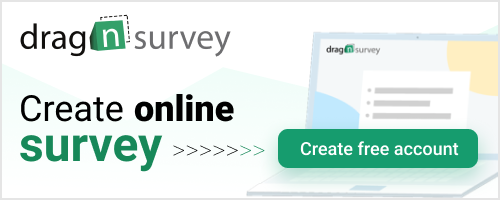One of the biggest mistakes survey creators make while producing their first survey is to ask leading questions to their audience. In this article, we’ll look at what a leading question is, how these can damage your research and how to avoid them.
>> Create your Online Survey with Drag’n Survey, click here

What Are Leading Questions?
Leading questions are a type of query where you are directing the audience to answer in a specific way. This can be done in how you present the answers available, or how you ask the question. Many leading questions often contain information, data or feelings that the writer wants to confirm.
This can cause problems as it leads the audiences into giving answers which they might not otherwise give. This could be because they think this will please the survey sender or because they feel pressured into giving an answer to collect a reward. Either way, the result is the same: a biased set of results that can have disastrous impact on your actions, are based on the data.
An example of this is asking your employees “Are you happy to eat lunch at your desks?” The majority of staff might answer yes because they are happy to eat lunch at their desks because there are no other options. However, given the choice, they might prefer a staff canteen, garden or break room.
What Are The Main Characteristics Of A Leading Question?
There are various specific characteristics that are often part of a leading question. These can be seen in the writing of the query as well as the set of answers. The four main characteristics of a leading question are:
- – They are written to intentionally develop a bias in respondents so that all data given aligns with the plans of senior leadership.
- – Queries contain elements of conjecture and assumptions.
- – Leading questions rely heavily on the personal input of respondents.
- – They tend to be insistent on obtaining feedback.
There are also different types of leading questions you need to be aware of. These are the types of leading questions that you might write or come across.
Assumption: This is a type of query where you are making an assumption of a participation, emotion or event that the audience is a part of. For instance, asking whether the staff is happy with lunch at their desk presumes that all staff eat their lunch at their desk. It also suggests that staff is happy and it is just a formality to get a response.
Interlinked Statements: This is about queries that have two statements which are closely connected. For instance, a question like: “Staff who eat at their desks are less likely to work late in the evening. Do you think this is true?” This is first assuming that staff who are eating at their desks are completing overtime and that the person answering the question thinks this statement is true.
Direct Implication: This is when you ask a question that assumes a previous result. For instance: “If you liked your holiday, would you book another one with us?”
Cohesiveness: This is when you are forcing the respondents to answer a question because of the forceful nature of your query. “You have had a great time on your holiday, haven’t you?”
Tagging: This is when you prompt respondents to answer in a certain way, often by using a negative element. For instance, ending a question with haven’t you, don’t you or isn’t it. For instance, “The parking for our event was spacious, wasn’t it?”
How Does This Impact Survey Health?
The biggest problem with leading questions is that the respondents will mostly give answers that they believe the writers want. This can mean that the data is tainted, or biased. Using this information can often mean that businesses and organizations don’t create differences that audiences truly want and this can harm business prosperity.
In addition, those surveys with leading questions can often have higher abandonment rates. This can cause significant issues as you have to seek a larger audience to collect enough data to act upon. In addition to this, because you’ve already got a set of answers in mind that you want, you are likely to dismiss anyone who does give an honest feedback.
How To Avoid Leading Questions
There are several tips to avoid leading questions. Firstly, it might be best to remove leadership from writing the questions. If you already have a set of answers you want in your mind, you’re more likely to ask questions that lead to those answers. Instead, ask a freelancer or a member staff to write the queries without mentioning what you expect out of the survey.
You should also keep questions clear, simple and jargon free. And check all questions for any of the characteristics we’ve mentioned above.
Conclusion
Leading questions are problematic for your surveys. They provide wrong data from your audiences, make decisions more challenging and can lead you to make mistakes for your business/organization. Therefore, you need to take steps, in order to avoid these.
More about surveys:
How To Deal With Inadequate Responses, click here
How Your Survey Can Help Trigger Profitable Revenue, click here
How To Ask Survey Questions To Benefit As An Entrepreneur, click here
Four Tips For Developing Meaningful Survey Questions, click here
How To Improve On Rating Scale Inefficiencies, click here
